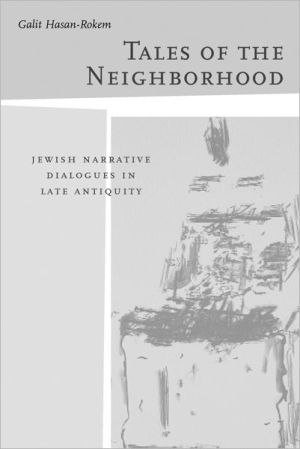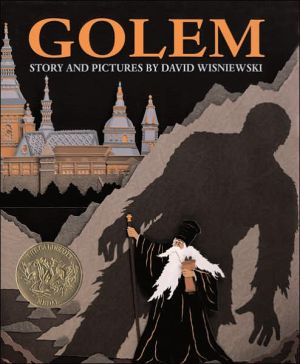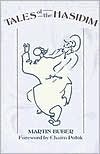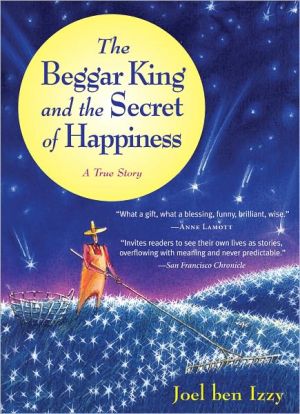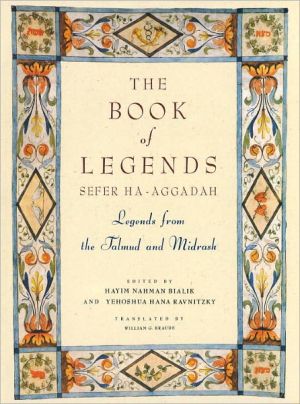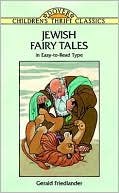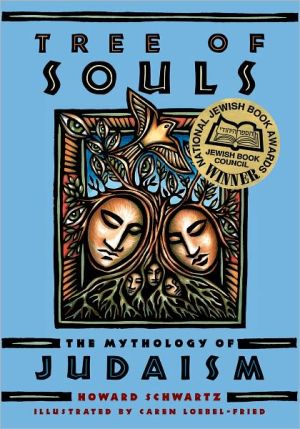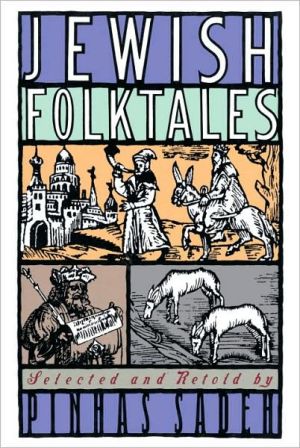Tales of the Neighborhood: Jewish Narrative Dialogues in Late Antiquity
In this lively and intellectually engaging book, Galit Hasan-Rokem shows that religion is shaped not only in the halls of theological disputation and institutions of divine study, but also in ordinary events of everyday life. Common aspects of human relations offer a major source for the symbols of religious texts and rituals of late antique Judaism as well as its partner in narrative dialogues, early Christianity, Hasan-Rokem argues. Focusing on the "neighborhood" of the Galilee that is the...
Search in google:
"Hasan-Rokem brings exciting new life to the rabbinic texts. She skillfully turns tales into windows where we can see the cultural world in which the narrators of the midrashic world lived. This stimulating work is sure to make rabbinic literature more accesible and relevant to a wider audience."—Charlotte Fonrobert, author of Menstrual Purity: Rabbinic and Christian Reconstructions of Biblical Gender"A meaningful contribution to feminist scholarship and studies of women in Jewish society of the Late Antiquities. Hasan-Rokem has succeeded in shifting our attention to women's narratives of Talmudic-Midrashic literature and the significance vested in them."—Dan Ben-Amos, Chair of the Graduate Program in Folklore and Folklife at University of Pennsylvania
Tales of the Neighborhood\ Jewish Narrative Dialogues in Late Antiquity \ \ By Galit Hasan-Rokem \ University of California\ Copyright © 2003 Regents of the University of California\ All right reserved.\ ISBN: 0-520-23453-7 \ \ \ Chapter One\ Erecting the Fence\ Texts, Contexts, Theories, and Strategies\ This short book seeks to explore the ways in which we can learn something about the relationship between literature and reality in Late Antique Jewish culture by reading the texts that we call Rabbinic literature, the Talmud and the Midrash. The discussion will evolve specifically in terms of narratives told in Hebrew and Aramaic, mostly in the Galilee, some time between the years 150 and 500 C.E.\ These stories are short and concise, and they are embedded in discursive contexts that often emphasize non-narrative concerns such as Bible exegesis and juridical deliberation. The reason they have stimulated generations of traditional interpretation and scholarly research is, I believe, their capacity to present themselves continually as forceful and condensed signs for multiple concerns and areas of experience and expression. The same seductive complexity of these apparently simple texts opens them for study from various vantage points and theoretical outlooks. It also assures us that no one analytical procedure will exhaust all their meanings.\ The main theoretical concept I want to develop here is the narrative dialogue. The narrative dialogue is an analytical tool devised to explore the transport of cultural goods in terms that stretch the linear and dichotomous models of thought lying behind the concept of influence. Without denying the unifying characteristics of entities defined, by themselves and others, in terms of gender, age-group, class, religion, nationality, ethnicity, or other socially and culturally determined characteristics, it is necessary to state that most cultural communication constantly traverses these categories. The traffic across identity boundaries is more easily discernable in contemporary oral discourse than in discourse fixed in writing in rhetorical contexts, as the Talmud and the Midrash are. My purpose is to elicit the orality in the written, to invoke the plurality of the canonical, and by that to problematize the authority of received traditions.\ Dialogues may assume various emotional and intellectual tones. They may display conflict, fear, adversity, and even hatred, and they may also breathe common heritage, shared interests, friendship, tolerance, and solidarity. Attesting to the communication between individuals from various intersecting, sometimes hostile groups, such dialogues never grow out of a total indifference of human beings to each other. Approaching the text as a dialogue, and in dialogue, maximizes its character as a communicative process in situ. Thus it may be claimed to be the most suitable approach for exploring the issue of the relationship of literature and reality, texts and human lives.\ At this stage of literary and cultural studies few, if any, scholars suggest looking for a direct, referential relationship between literary texts and the realities to which they are connected. One may say that culturally and theoretically informed scholarship in the present approaches reality and literature as a mutually transforming bundle of relations. Realities form texts; texts on the other hand may be powerful agents in shaping realities.\ It is now also generally accepted that literary texts with historical reference reflect the realities of those that crafted them rather than of those who figure in them and about whom they seem to tell. The case of Rabbinic literature proves, however, that this simple premise may present more of a maze than a highway for interpretation.\ Rabbinic literature of Late Antiquity has come down to us in manuscripts and printed versions, all themselves produced no earlier than five hundred years after the projected date of the original production of the texts. The textual body of the Talmud and Midrash is immense in its scope and includes writings from Palestine as well as from Babylonia (in the region of what is Iraq today), compiled in a complete diglossia of Hebrew and Aramaic. These particular linguistic circumstances of a two-in-one language constitute an engaging field for the study of border crossing and unstable identity in Rabbinic literature that cannot be accomplished here.\ The generic nature of the texts is varied, but could generally be characterized as being ethnographic in its concerns, including juridical and normative discourse, rooted in an intertextual practice of Bible interpretation and quotation, as well as various forms of narrative. I hold the texts to be ethnographic in their main interest as they, like ethnographic writing, reify the Lebenswelt, the experienced world, of the society they relate to, based on dialogically narrated material. It is exactly what has often been stamped as the Rabbis' lack of interest in history that I identify as their interest in ethnography: privileging the long duration of social institutions and everyday life over named historical persons and events with specific dates.\ The Rabbis' textual production can be quite adequately characterized using Paul Atkinson's description of modern ethnographic writing: "vraisemblance based on 'intertextuality.' ... The persuasive force of the ethnographic argument ... is sustained by the repeated interplay of concrete exemplification and discursive commentary. The text moves from level to level and from voice to voice." Among the various expressive forms of discourse, generically identifiable narratives are those that can most feasibly be said to have been transmitted in oral communication and that pertain to the authority of collective creativity, and it is such texts that I shall analyze.\ Because of its own traditional character and the open-ended editorial technique invested in it, Rabbinic literature of the Amoraic period, created approximately from the third century to the sixth century C.E., is best seen in its broader context. This includes (in addition to the canon of the Hebrew Bible) other Jewish-Hebrew and Aramaic-texts, the earlier Mishnah and other Tannaitic texts, and liturgical poetry and Bible translations, as well as mystical and magical texts mostly composed somewhat later than the main body of Rabbinic literature. Another intertextual perspective includes Hellenistic and Roman texts and the texts of Early Christians, especially, but not only, those composed in Palestine and its immediate vicinity.\ The term used in English for the texts produced by Jews in the first five or six centuries of the Common Era, namely Rabbinic literature (parallel to the Hebrew Sifrut Haz"al), discloses immediately the patriarchal, male-dominated character traditionally attributed to these texts. Virtually all the individuals to whom particular passages are ascribed in the text are unambiguously male. The very small number of exceptions simply proves the general tendency. Apparently men also composed the larger units of texts, during the hundreds of years of their development.\ The approach to Rabbinic texts applied here brings together theoretical and methodological perspectives of the historical study of ancient texts and research in folk literature and folklore. In earlier projects I have carried out research based on fieldwork in present cultures, that is, through interviewing and observing behavior and discourse. I shall try to elaborate on the possibility of applying this experience to the study of ancient texts. Dialogue has been a central concept in folklore and cultural anthropology for more than a decade. In addition to the obvious methodological aspect of the mode of procuring information, the dialogical approach also brings into the research a heightened existential consciousness and a positive approach to interpersonal and intercultural communication in itself. It generates as well a critical approach to the inescapable power of hierarchies that is a part of most fieldwork situations, between individuals with unequal educational and economic conditions, although it does not, of course, erase these inequalities. It is rarely the ones who are lower in power hierarchies who study those higher up. Historical study produces a similar "inequality," formulated by Hans Georg Gadamer and others as the hermeneutical stance of those who are acquainted with what came to pass. The feminist aspect of the present approach acknowledges, in fact celebrates, this turning of tables on the ancient patriarchal texts.\ The tradition of the systematic study of folklore in Rabbinic literature was initiated by such masters as Bernát Heller and especially Louis Ginzberg. Dov Noy, who in the late 1950s began the academic research into contemporary folklore of Jews and Israelis, has devoted several studies to its links with Rabbinic literature.\ Folklore in Rabbinic literature may be conceptualized in various ways, as scholars, notably Eli Yassif and Dina Stein, as well as myself, have recently shown in book-length studies of the topic. Yassif's historical genre taxonomy, embracing Rabbinic literature in the entire continuum of Jewish/Hebrew folk narratives, strongly suggests defining literary study essentially within its own realm. Stein's approach is characterized by an emphasized caution with regard to establishing connections between the ancient texts and reality, probably reflecting the extreme lack of contextual information concerning the work to which she devoted her study, namely Pirkei De-Rabbi Eliezer. Constrained by subjectivity as I am, I shall only venture to say that my own approach is stamped by an ongoing tension. I am convinced that the texts of the Rabbis do communicate some aspects of the reality of Late Antique Jewish lives, with the proviso that who those Jews were is open to interpretation. At the same time, I can see that the texts wrap us in impenetrable veils of constructions.\ As will be shown, the folkloristic point of view purports a reading of texts as cultural study, aiming at a dynamic comprehension of the communicative processes that construct and express group identities, while striving to trace the complex negotiations carried out with respect to their borders and overlappings. In particular, tales about women neighbors in Rabbinic literature are relevant to these theoretical and methodological preferences because of the conjunction of territorial and gender issues that they bring into focus. They reflect, construct, and regulate Late Antique Jewish approaches concerning differences and boundaries, as well as bonding and affiliation. In them the inseparability of the discourses of everyday life and of theological matters demonstrates the inherent ethnographic character of Rabbinic literature in all its phenomenological aspects, encompassing Aggada and Halakha.\ The German Jewish pioneer of cultural studies Georg Simmel observed in his work on the sociology of space that the concept of border is a necessary consequence of the correlation between groups of humans and space. The border, while dividing the space between two groups, also forms the closest meeting place between them. Thus borders often constitute the issue as well as the locus of strife, but they may also serve as an arena for contact and exchange. Borders are crossed and trespassed, they are set and negotiated. A semiotically highly condensed sign communicating nexus and plexus, they are the very epitome of the cultural construction of human relations in space.\ Simmel also coined the term "female culture" in an essay thus titled (which is in many senses dated), in which he points out the contrived character of gendered generalizations of female and male areas of expression, while himself not escaping several such generalizations. I shall evoke the possibility of envisioning specific domains of feminine experience in ancient texts, notwithstanding the theoretical weakness, maybe even impossibility, of such conjectures of specific "mentalities." The inherent corrective for these looming problems is to turn to the analysis of "the contexts of communication and ... explicit concepts of linguistics and other categories," as G. E. R. Lloyd has advised in his perceptive critique of the study of mentalities.\ Neighbors have earned astonishingly little scholarly attention. Their connection is, however, the socio-spatial tie that constitutes the closest relationship beyond the family unit, and in patriarchal societies neighbors very often also belong to the same family. In various excavations of Late Antique houses in the Galilee it has often proven impossible to delineate clearly where the limits between family and close neighbors were on the ground. Thus the neighbor relationship both is based on spatial and social proximity and embodies boundaries.\ It is not a coincidence, I believe, that stories about neighbors tend to figure women as their protagonists. The correlation between women figures and minimal territorial passage enables those stories to articulate lesser sociocultural border crossings, while pointing at much more severe ones, which are transported into the reading by means of cultural associations and intertextuality. The Janus face of reflection and construction becomes apparent: the neighbor women of our tales may be seen as metonymic representations of neighbor women in the Galilee of Late Antiquity and as metaphors for various other kinds of "neighbor" relations at the same time. Neighbors encountered in ancient texts constitute narrative topoi when regarded in the light of literary tradition, cultural idioms when the sociocultural perspective is stressed.\ My interest in this topic was roused in the context of my work on the Palestinian fifth-century text Leviticus Rabbah (or Vayiqra Rabbah), elaborating on the biblical book of Leviticus, the third book of Moses. Leviticus Rabbah belongs traditionally to the "great Midrash"-Midrash Rabbah-on the Pentateuch and the Five Scrolls. Midrash Rabbah is, however, not one literary work; it stems from various periods and locations. Each of its separate books (Genesis Rabbah, Exodus Rabbah, ... Song of Songs Rabbah, Ruth Rabbah, etc.) has a distinct compositional and poetic character. Leviticus Rabbah is a so-called homiletical Midrash, meaning that it does not elaborate on each verse of the biblical book, as does the exegetical Midrash (Genesis Rabbah, Lamentations Rabbah, Song of Songs Rabbah, Ecclesiastes Rabbah). Leviticus Rabbah is distinguished by its elaborate and unified compositional scheme and by the superb quality of its narrative style.\ Leviticus Rabbah includes no less than four narratives in which the encounter of women neighbors either is the focus of the narrative or plays a central role in it. Considering the rather marginal role of women in Rabbinic literature generally, this relative concentration of women neighbors in one text calls for explanation and interpretation.\ \ Continues...\ \ \ \ Excerpted from Tales of the Neighborhood by Galit Hasan-Rokem Copyright © 2003 by Regents of the University of California . Excerpted by permission.\ All rights reserved. No part of this excerpt may be reproduced or reprinted without permission in writing from the publisher.\ Excerpts are provided by Dial-A-Book Inc. solely for the personal use of visitors to this web site. \ \
Preface1Erecting the Fence: Texts, Contexts, Theories, and Strategies12Peeping through a Hole: Comparing and Borrowing283Building the Gate, or Neighbors Make Good Fences554The Evasive Center: Hadrian, the Old Man, the Neighbor, and the Rabbinic Rhetoric of the Empire865Between Us: A Conclusion138Notes145Index of Ancient Sources and Authors191General Index195Index of Modern Authors205
